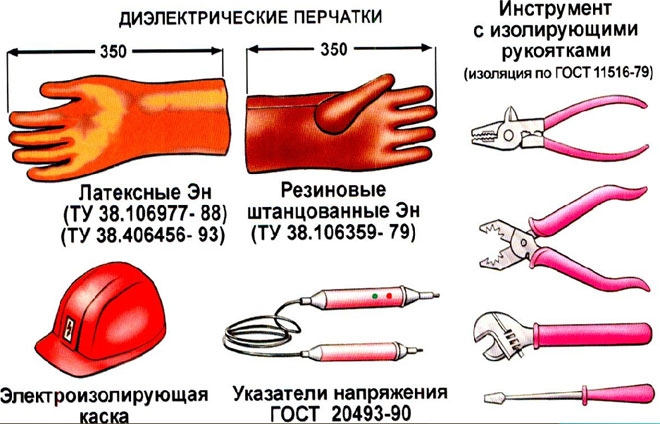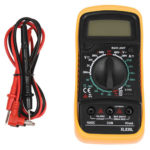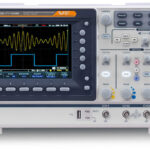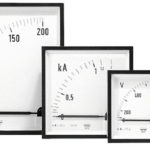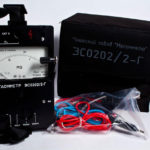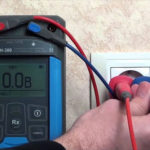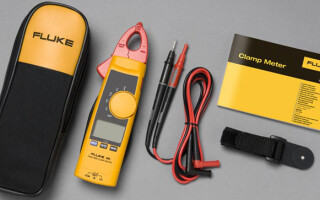The measurement of the amount of electricity that has passed per unit of time through the cross section of the conductor (current strength - I) is traditionally carried out when the circuit is broken with a special device that makes the measurement connected to it at that moment. Clamp meters are used to determine the intensity of the electromagnetic field that occurs near the conductor. Their use speeds up and simplifies the measurement process.
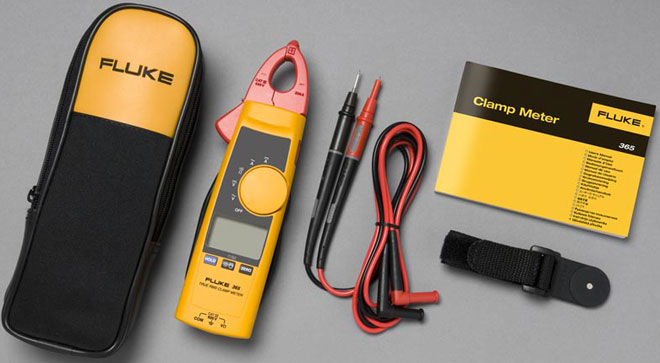
Content
What is measured by current clamps?
Before purchasing this device, you need to decide for what purposes the electrical clamps are intended.
They are a transformer with an ammeter connected. The device itself is the primary winding of the transformer. The placement of a conductor inside it contributes to the induction of an electric current on the winding due to the emerging electromagnetic field.Then it enters the secondary winding of the coil, the readings from which are read by an ammeter. The readings of this device are recalculated, adjusted for the transformation ratio indicated on it. A DC transformer does not work, so the current clamps described are for AC.
Clamp meters manufactured today are used for values measured with direct current. In place of the ammeter, a Hall sensor is placed, which detects the presence and voltage of the electromagnetic field.
Using these devices, the following measurements are made:
- actual network load available;
- the accuracy of the readings of various equipment designed for electricity metering, comparing the readings on them with the readings obtained by measuring with clamps;
- power of household and electrical appliances used in professional activities.
Current clamps for direct current are more expensive than their counterparts for alternating current, but are more accurate and have increased quality indicators.
The tool, used in conjunction with a digital multimeter, allows you to save the user from calculating the desired value, since the device has a built-in calculator.
The principle of operation of current clamps
When using any methods, the main principle is measurement. It is similar when using multimeters for everyday use (up to 1000 V) and professional ones (above 1000 V). Household measuring pliers are single-handed, and professional ones are mostly two-handed. It makes sense to purchase professional devices when working with high-voltage networks.
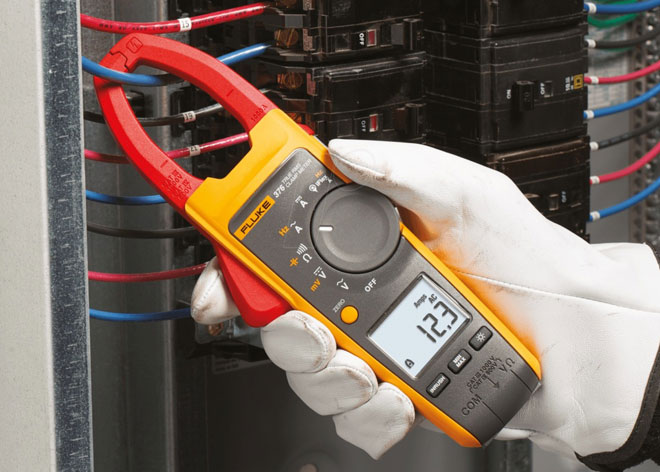
Clamp meters connected to a multimeter allow you to perform the measurement process in the following sequence:
- a wire for measuring electric current is detected (girth of several wires by the tool during measurement contributes to obtaining an incorrect result);
- the range and mode of the tester are selected - with an unknown value of I, measurements start from the largest scale;
- place in the current clamp the conductor in which it is necessary to measure I (to achieve an accurate measurement, the wire is placed in the center perpendicular to the body of the device).
The measurement mode is automatic, the numbers are displayed on the display.
Using a simple example, you can demonstrate how to check the load in a 220 V network. The position of the switch of the clamps in order to measure the current is AC 200, the clamps wrap around the conductor, and then take readings. Find the product of the measured value and the voltage. The calculated value can be compared with the values of electricity meters.
Structural elements of current clamps
Electrical clamps in their composition have the following main elements:
- connectors into which the corresponding probes are connected;
- a display showing the measurement result;
- mode switch;
- tool release button;
- magnetic circuit (the pliers themselves).
When measuring direct current, the instrument circuit includes:
- current transformer;
- straightening bridge.
The secondary winding is connected to the keys with a set of shunts.
Current clamps are divided into one-handed and two-handed. Single-handed in the design combine the handle and the insulating part. Opening is carried out by a push lever. The work is done with one hand.
For two-handed devices, the size of the handles exceeds 13 cm, and the insulating part - from 38 cm or more. A design feature is their use with 2 hands.
When buying are determined by choosing how to choose the required tool. In retail outlets there is a large assortment of these devices with different functionality, on which the price depends on them. When buying, the consumer must decide on the necessary functionality, some of which may be redundant.
Basically, the tool is designed to solve the following tasks:
- measure the voltage in the network and give out amperes;
- determine the frequency of the electric current;
- ring wires.
Measurement modes
There are 2 methods for determining the current strength:
- direct;
- indirect (inductive) measurement.
The first method is performed by connecting an ammeter to an open circuit. An electric current passes through the device, information about the value of the I value appears on the display.
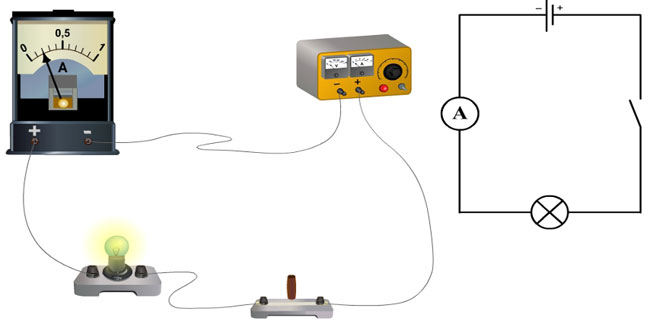
Advantages of this method:
- measurement accuracy, depending on the class of equipment;
- ease and availability of measurements.
Flaws:
- it is impossible to measure large values of electric currents due to design features;
- without a break, it is impossible to measure the parameters of the circuit;
- measurements are performed only in the circuit that is connected to the device.
If the clamp meter acts as a current transformer in the role of a secondary coil, then the inductive method is used.
Its advantages:
- safety;
- large values of electricity are measured;
- there is no need to break the circuit to carry out measurements;
- mobility of measurements.
But it is not without its shortcomings:
- measurements cannot be performed in hard-to-reach places;
- with small values of the parameters being determined - a large error.
When using this tool for an electrician, it is useful to know some of the nuances that improve the quality of operations.
When considering how to use current clamps with a too small value of I in a conductor that is not exactly determined by the tester, you need to use the winding of the conductor on one of the working parts of the device. The display shows information about the total indicator, the exact value is determined by the ratio of the obtained value to the number of turns.
If the value of the electric current is greater than the maximum possible for the tester, “1” appears on the screen. The range of measurements performed increases, they are repeated.
Leakage current is detected when searching for it on the ground wire, as well as when grasping with clamps to measure zero and phase current. If a number other than “0” appears on the screen, then there is a leak, the insulation breakdown must be looked for on the case.
If there is a “Hold” button, the current clamp model can measure electric current in hard-to-reach places. When performing such an action, the current clamp covers the wire, after which this button is pressed, which leads to the fixation of the value on the screen, after which it is viewed in any available place.
The measurement mode switch can be in different positions depending on which indicator is being measured. So, when determining the direct current, it is placed in the "DCA" position, and the voltage - "DCV", for variable types - "ACA" and "ACV", respectively.The switch also allows you to carry out continuity, check diodes and resistance.
The probes are connected through multi-colored connectors with different alphanumeric designations. The red wire is connected to the same connector labeled "VΩ". The connector of the same color "EXT" is designed to connect an insulation meter. The neutral wire is connected to a single-color connector with the symbol "COM".
Work Safety Measures
Interaction with any devices that come into contact with electricity requires certain safety precautions. The ticks in question are no exception. During the active actions carried out by them, it is prohibited:
- when connecting them to current-carrying elements, touch open connectors;
- when working under voltage, measure the resistance;
- switch ranges when the conductor is in the instrument;
- exceed the maximum overload capacity of the tool for a certain range.
With a professional tool in electrical installations with voltages above 1000 V, 2 workers carry out work: 1 with group III and 1 with group IV.
